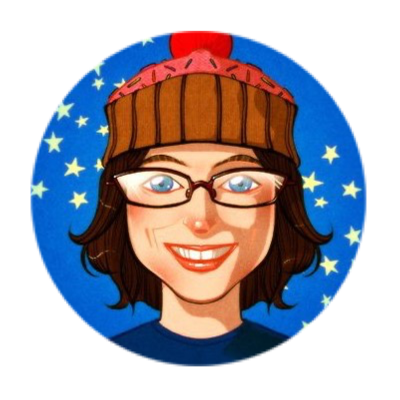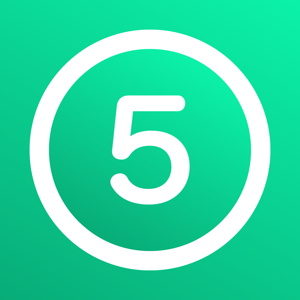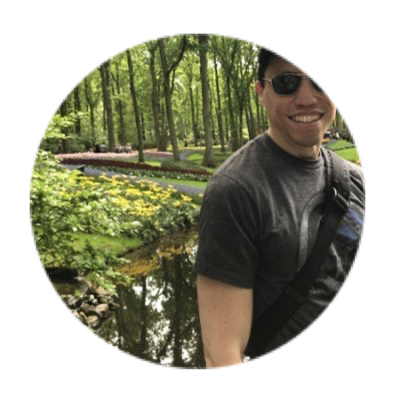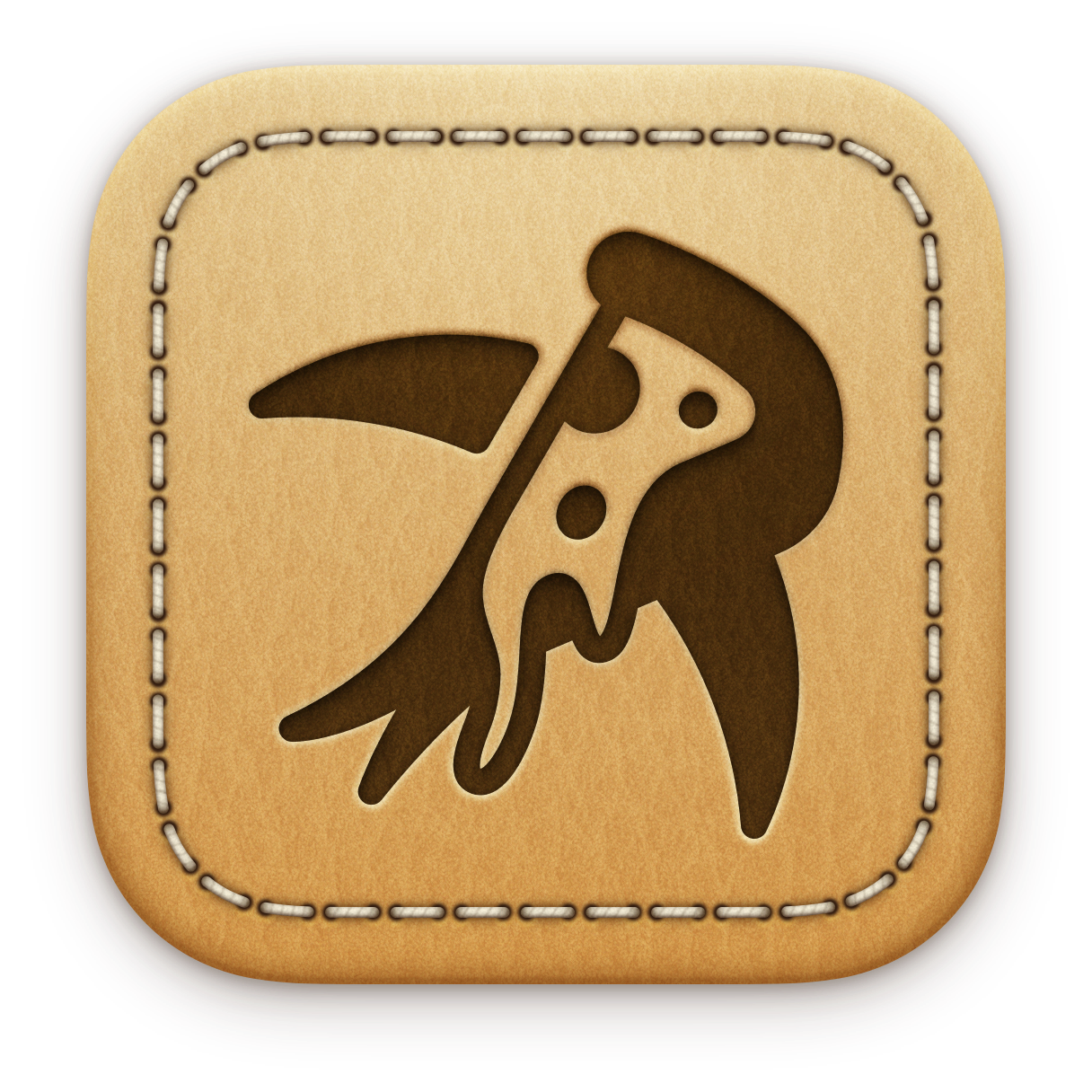Issue #90 - Angela Brett and Roddy Munro
Happy Monday, everyone!
We made it to Issue #90! Thank you to everyone who read last week’s issue ❤️
Today’s Spotlighted Indie Dev
📆 Today I’m featuring Angela Brett and Roddy Munro.
👉 Please make sure to follow them or support them anyway you can! 😇 I’m excited to share their indie dev stories.
Indie Devs


Angela Brett
Q&A
1) What is your name? Where do you live?
My name is Angela Brett, and I live in Vienna, Austria.
2) Introduce yourself. Education? Background? Main job? Interests outside of tech? Interests inside of tech?
I have a bachelor’s degree in maths and a Masters in Web Development for Linguistics, but I’ve been programming since I was a kid so I’ve always done that as a job. I started out on BASIC, mainly on an Amstrad, then got a Mac and started programming in HyperCard. I got Mac OS X the year it came out, and started learning Objective-C the night before my C++ exam at university. Currently my day job is working on an iOS app for a bank.
Inside of tech, I’m into accessibility, natural language processing, and text-to-speech. Outside of tech, I like writing poetry, doing recreational mathematics, and going to concerts, especially comedy music and nerdcore.
3) Have you ever considered yourself an indie developer?
I considered myself an indie developer when I was freelancing in 2017–2018, but most of the rest of the time I’ve had ‘normal’ jobs. In retrospect I was an indie developer when I was in high school and university, releasing shareware HyperCard stacks, but I had probably never heard that term at the time. I also wasn’t making a living from it, though over the course of quite a few years the software I released earned me about US$1000, two T-shirts (I asked for T-shirts at first to avoid dealing with foreign currency), and a friend.
4) What got you started/interested in creating your own applications outside of your “normal” job?
I’ve been creating my own applications as a hobby since before I ever had a job, usually for my own use and sometimes released online. My “normal” jobs were all on Windows and Linux up until 2014, but in my spare time I always wrote macOS apps. What made me release my first iOS app was that I wanted a “normal” job working on Apple products, and most of the iOS dev job listings had ‘must have an app on the App Store’ as a requirement.
5) How do you balance your time between friends/family, work, hobbies, and indie dev?
Coding is one of my main hobbies, so that helps. I also tend to write apps that relate to my other hobbies… I made an app to generate a rhyming dictionary to help me write poetry, an app to make my Mac sing songs I write, and a word cloud generator to make a trailer for my YouTube channel full of concert videos. These were all for my own use, and I never tidied them up enough to release them, apart from a web version of the rhyming dictionary (http://rhyme.science), which was my Masters thesis.
As for the apps I’ve actually released, I did most of the work on them while otherwise unemployed, and have largely neglected them whenever I have a job or sufficient freelance work. I’m not sure whether that counts as ‘balance’, so much as ‘wobbling around and letting things fall off’.
6) Nasty Writer - You had me at “Automated immaturity”. Can you give us some insight into what the app does and how it works?
There was a Twitter user named @realdonaldtrump who didn’t seem to be able to mention certain people or things without adding a gratuitous insult before them. Being interested in natural language processing, I thought it would be fun to see if I could automate the process of adding insults before nouns. So the app uses the natural language processing APIs to find nouns in whatever text you put in, and if there isn’t already an adjective before the noun, it adds in an insult.
I got most of adjectives by downloading an archive of that user’s tweets, and using the same natural language API on macOS to find adjectives that appeared before nouns. I went through the list of adjectives it found and picked out the ones that seemed gratuitously nasty.
7) Nasty Writer - I see that you added some interesting functionality with Siri shortcuts. Can you explain how it works?
I added this functionality mainly as a way to get familiar with Siri shortcuts, and I suspect it hasn’t kept up with the current possibilities of Siri shortcuts. There’s a ‘nastify’ shortcut to add insults to the provided text, and a ‘give me an insult’ shortcut which just gives you a random insult, surrounded by some nasty emoji for flavour.
8) Nice Writer - We could all use more niceness after the last two years we’ve had. What made you want to create this anti-nasty version?
I was out of work, Valentine’s Day was coming up, and (though I didn’t know it at the time) @realdonaldtrump was about to be kicked off Twitter, so it seemed like the thing to do. I don’t want to be known as someone who just makes things nastier. Also, I could find a lot more nice adjectives, since I wasn’t limiting myself to a specific twitter account.
9) I see that Nice Writer and Nasty Writer have some interoperability between each other (copy/paste). Can you explain how that works?
Most of the magic is done with custom string attributes, which identify which words were added by the app and which were input by the user. These also keep track of other changes the app made to the text — changing capitalisation, changing between ‘a’ and ‘an’ before an added adjective, and so on. So all that extra information gets automatically included when you copy and paste between apps. And of course the two apps share a lot of code, so they both understand those custom attributes.
10) When browsing your website I was so interested in the detailed trees you made with shared word etymologies. Can you tell us a little about them and how you used AppleScript in their creation?
I read a blog post (https://www.danielde.dev/blog/surprising-shared-word-etymologies/ where somebody wrote code to identify words with common origins with the most dissimilar meanings, and from that I ended up binge-listening the History of English Podcast, where some of these and other etymologies were explained. I wanted to see diagrams of how all these words were related to each other — it’s really amazing how the same original word can gradually give rise to words with completely different meanings and pronunciations.
I’ve been dabbling in AppleScript since I first got Mac OS 8, and I quite often use it to control OmniGroup products, since they are all very scriptable. So I downloaded the same data used in the blog post, loaded it into Numbers, and wrote some AppleScripts to read the data from Numbers and graph it in OmniGraffle as ‘family tree’ type diagrams, showing which words were derived from which others.
11) Any plans for the future or things from you that you’d like people to know about?
I’m not sure which software projects I’ll work on next… my biggest plan at the moment is eventually moving to the USA to live with my new husband. So I’ll just direct people to a post I wrote about how accessibility is for everyone (https://angelastic.com/2021/02/26/accessibility-is-for-everyone/), because it’s important.
12) What’s been the hardest part of being an indie dev? What is the most fun part of being an indie dev?
The hardest part for me, at least when freelancing, was just not knowing when or if I’d get more work. I had a client that I’d found through a friend, and never figured out how to find more clients on my own. It’s nice having a day job where I know I can just show up and there will be money and something to do for it. And people to teach and learn from!
One of the fun parts was working from home in my own time, but these days everyone is doing remote work anyway, so that’s not so much of a big deal. It was exciting to me just to have my own company though — it’s a silly thing but it felt neat to get samples of pens and so on in the mail with my company name on them.
13) Is there anything else you’d like to tell the indie dev community about you?
My life is ridiculous; I wouldn’t know where to start!
13) Do you have any other indie devs that readers should follow / lookout for?
I meet a lot of devs at conferences, through iOS dev happy hour, and on Twitter, but I can’t think of any that are definitely indie devs that you haven’t already interviewed! How about some people I know from the recreational maths world who also write or tweet about code: @mscroggs and @lunasorcery, to pick a few at random.
Roddy Munro
Q&A
1) What is your name? Where do you live?
My name is Roddy Munro, and I live just outside Saint John in New Brunswick, Canada.
2) Introduce yourself. Education? Background? Main job? Interests outside of tech? Interests inside of tech?
I was born and raised in Lincolnshire, UK, and studied Computer Science at Sheffield Hallam University. Since graduating, I was writing automated tests in Python and Selenium at Citrix, before finally getting a full-time job as an iOS developer after 7 years of it being a hobby! I’m now working at REDspace, working on an app used by millions of people every month.
Outside of tech, I watch a lot of sports - football (soccer) and ice hockey are my big 2 - and I collect license plates. It’s a fun but unusual hobby, and certainly a good conversation topic. One of the walls in my office is covered in plates, which saves on wallpaper…
3) Have you ever considered yourself an indie developer?
Yes, certainly before I started my job as an iOS developer last year. I still consider myself one now, but admittedly I don’t spend as much time outside of my full-time job working on my own apps as I used to.
4) What got you started/interested in creating your own applications outside of your “normal” job?
I knew early on in my software engineering career that iOS development was where my future lay. I find that the best way for me to learn is to create. The opportunity to then solve problems that I or my loved ones faced gave me motivation too.
5) How do you balance your time between friends/family, work, hobbies, and indie dev?
These days, I tend to spend 2 or 3 evenings a week working on indie dev. I try to keep my weekends free from any kind of software development to allow me to devote time to other activities. Before I got my iOS development job last year and during the pandemic, I spent a significant amount of time (sometimes up to 40 hours a week) on indie dev on top of my full time job - but that was because there wasn’t much else to do!
6) Classifier - Classifier is such a great app because it can be used for such a variety of collectibles. I know that you collect license plates. Did you create it to solve a problem you were encountering with collections or something else? Also, what’s your “white whale” of license plates that you’re searching for?
Those who have known me for a while will know that I originally had an app called Plate-It. I created that app for myself because I found that the traditional method of putting your collection in a spreadsheet wasn’t graphical or intuitive enough for me.
Last year, Plate-It was unfortunately taken down after some frustrating cloud problems, so I used that as an opportunity to create Classifier. I had received many comments along the lines of ‘you should make a Plate-It for <insert collectible here>’, and so Classifier allowed me to fulfil that request. Not only can I use Classifier for license plates, but I can also use it for my many sports jerseys too!
My license plate “white whale” is definitely the New York Lunar Module license plate. Very few were issued to celebrate the 25th anniversary of the lunar landings back in the 90s, and I only have a record of 5 being in collections. If anyone has a lead on one, you’ll never have to pay for any of my apps again! ;)
7) Classifier - What has been your reception to making Classifier a subscription based app?
Overall it’s been generally positive. I’ve had the odd comment that $1.99 every 3 months is too much, but some serious collectors spend waaaaay more than that on a single collectible.
When Plate-It started, it was a paid-up-front app, and I didn’t get many downloads at all. Since making it free to download with a subscription, I have experienced many more downloads and a greater reach. I decided to keep this model when I launched Classifier, and now I’m just about earning more than what my Apple Developer subscription costs each year. 😅
8) Classifier - Have you found that users prefer lifetime or subscriptions when upgrading from the free version?
Approximately 80% of paying users choose a subscription. I priced the lifetime subscription in a way so that it would nudge people towards the subscription - lifetime is priced at about 5 to 6 times the cost of a yearly subscription. However, some people absolutely hate subscription, so then they pay for lifetime.
9) Classifier - Being able to export your entire collection as a single image is brilliant. Where did this idea come from?
I’m a member of several license plate collectors groups, and I found that I couldn’t fit my collection on a single screen and take a screenshot for sharing with others. Thanks to some SwiftUI and UIKit magic, I was able to add this feature. Fun tip: you can also filter your collection by tag or other parameters, and export an image of just those collectibles. I personally use this feature a lot!
10) Ceramispace - I read that you made Ceramispace for your wife. Can you tell us about how the app came about?
My wife Danika is a full-time potter, and she is churning out several hundred pieces of pottery every month (I pretty much live in a mug factory!). Two problems she faced was that her glaze recipes were scattered across many different notebooks and other sources, and that she had to calculate her kiln firing schedules by hand each time. Working together during the pandemic, we came up with Ceramispace to solve both of these problems, and more!
You can follow my wife Danika’s work on Instagram: https://instagram.com/danikavautour
11) 1095 - Days Until Citizenship - For those that aren’t Canadian, what’s the significance of the number 1095 and what inspired you to write this app?
During the pandemic, I moved to Canada and got my permanent residency. I am now counting down the days until I am eligible to apply for citizenship. The significance of the number 1095 is that’s the number of days you need to have been in Canada within a certain timeframe to be eligible.
There is a calculator online provided by the Government of Canada that works out if you are eligible, or how many days are left until you are eligible. This calculator can be quite complicated and cumbersome, so I decided that would make a great iOS app, as well as being a good opportunity to play with Widgets. I now have a good idea of when I will be eligible to apply for my Canadian citizenship!
12) What’s been the hardest part of being an indie dev? What is the most fun part of being an indie dev?
The hardest part for me to begin with was coming up with ideas that were worth investing a significant amount of development time into. I have a big list of app ideas that I either never started, or started but decided it was no longer worth working on. Another thing I struggle with (and I’m sure others can relate to) is thinking of a good, catchy app name, and designing an icon that stands out. The icon for every one of my apps was created by me, and I’ve improved a little bit over the years, but it’s still something I struggle with!
Honestly? The most fun part is seeing users of my apps begin trials and make purchases. It makes me feel good that my work is worth paying for, and it gives me the motivation to keep adding new features. I use RevenueCat to handle my in-app purchases, so I’m able to use the RCKit app to keep track of my app’s revenue.
13) Is there anything else you’d like to tell the indie dev community about you?
I believe that SwiftUI is ready for production. ;)
I’m also fairly active on Twitter, so feel free to say hi! https://www.twitter.com/podomunro
14) Do you have any other indie devs that readers should follow / lookout for?
There are many great connections I’ve made over the years through the iOS community, but here’s a handful:
- James Haville (https://twitter.com/jameshaville)
- Dave Jacobsen (https://twitter.com/davejacobseniOS)
- James Saeed (https://twitter.com/j_t_saeed)
- Sam McGarry (https://twitter.com/sammcgxrry)
- Aaron Pearce (https://twitter.com/aaron_pearce)
- James Ryu (https://twitter.com/jrswiftjourney)
- Tim Isenman (https://twitter.com/TimIsenman)
- Misael Landeros (https://twitter.com/MisaelLandero)
Newly Released and Updated Indie Apps
Here are some newly released and newly updated apps from this past week! If you would like to possibly see your app in this list, please submit your app to the look at me form 👀

Thank you to everybody who made it to this footer! You either spent the time to read or took the effort to scroll 😊
Make sure to visit https://indiedevmonday.com/subscribe to get an email of future issues!
And go to Twitter and give @IndieDevMonday a follow… or multiple follows if you manage more than one Twitter account 😜

